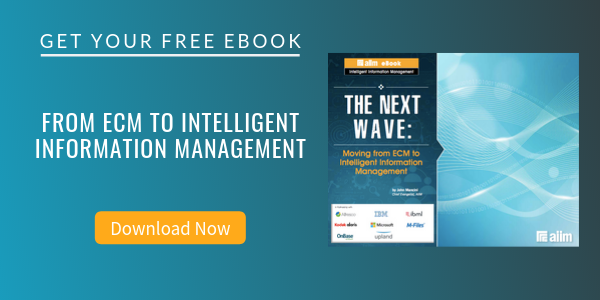
Connecting the Dots between Documents, Content, and Data
Data Management | Enterprise Content Management (ECM) | Document Management
Since the 1980s, relational databases have been used to store business information. They were a huge step forward over hierarchical databases, which organized data into rigid tree-like structures with connections between data elements defined by the links in the structures.
Relational databases typically store information in rows and columns in tables, with column names providing the linkages between tables. The relational model works terrifically well within a particular database but can create challenges across databases, particularly at scale, when linking vast volumes of data with inconsistent naming conventions.
ECM systems are typically a bit more complex, consisting at their core of— a) a file management system to store content assets and b) a relational database to store the metadata associated with those assets.
For over two decades, the disciplines of content management and data management have existed in somewhat parallel universes. This disconnect has manifested itself in a lack of integration between data-centric business systems and ECM systems. AIIM research indicates that 27% of organizations with ECM systems report no integration between their ECM system and other core business systems. For example, 61% report no connection between their ECM and ERP systems.
Folks in the content management space have traditionally framed the approach that we take to solving document-intensive process problems in content management terms and within the confines of the specific process problem being solved. Content management was the lens through which we looked at these problems, and specific content management technologies – e.g., ECM, ERM, Information Governance, Taxonomy and Metadata – were the tools that we used to solve them.
“ECM” was the straw that stirred the drink for these large-scale document-intensive process problems. This content frame -- rather than a data-centric frame -- served us well for over a decade – when the first-generation problems to be solved centered around large scale automation and elimination of paper within a specific business process. And it is still a very relevant and important frame for organizations that haven’t yet solved these core process problems.
There are new process challenges, though, that are changing the way many organizations look at the role of ECM and how they look at the connection between data and content. For these organizations, content management is not necessarily at the center in how they look at these process problems but rather one element in a set of required capabilities (including semantics, business intelligence, CRM, and ERP, to name a few) necessary to solve a business problem.
About John Mancini
John Mancini is the President of Content Results, LLC and the Past President of AIIM. He is a well-known author, speaker, and advisor on information management, digital transformation and intelligent automation. John is a frequent keynote speaker and author of more than 30 eBooks on a variety of topics. He can be found on Twitter, LinkedIn and Facebook as jmancini77. Recent keynote topics include: The Stairway to Digital Transformation Navigating Disruptive Waters — 4 Things You Need to Know to Build Your Digital Transformation Strategy Getting Ahead of the Digital Transformation Curve Viewing Information Management Through a New Lens Digital Disruption: 6 Strategies to Avoid Being “Blockbustered” Specialties: Keynote speaker and writer on AI, RPA, intelligent Information Management, Intelligent Automation and Digital Transformation. Consensus-building with Boards to create strategic focus, action, and accountability. Extensive public speaking and public relations work Conversant and experienced in major technology issues and trends. Expert on inbound and content marketing, particularly in an association environment and on the Hubspot platform. John is a Phi Beta Kappa graduate of the College of William and Mary, and holds an M.A. in Public Policy from the Woodrow Wilson School at Princeton University.



